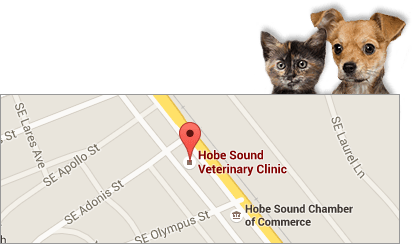Running with your dog is more than just a way to stay fit—it’s a shared experience that strengthens the bond between you and your canine companion. Incorporating your dog into your running routine can improve both your physical and mental health while also benefiting your pet. Dogs are natural athletes, and running together can help manage their energy levels, reduce anxiety, and promote better overall behavior. Plus, it’s a great opportunity to explore the outdoors together. However, before hitting the trail, it’s essential to understand the unique considerations of running with your dog, such as choosing the right gear, understanding your dog’s fitness level, and ensuring their safety during runs. This article will guide you through everything you need to know to make running with your dog a rewarding and enjoyable experience for both of you.
Have you ever considered taking your dog running with you? It’s great exercise, both for yourself and your canine companion! Going on a run with your dog is more complicated than simply clipping on the leash and heading outside, though. Learn more below:
Breed Considerations
Before going on a run with your pooch, take his or her breed into consideration. Brachycephalic dogs—breeds with “squashed” faces like pugs, bulldogs, Boston terriers, and the Pekingese—don’t do well when they’re over-exerted, especially in hot weather. It’s safest to avoid going on runs with these types of breeds altogether.
Muscly dogs like pit bulls and boxers, and even the Greyhound which we classically associate with running, aren’t necessarily built for long-distance. These breeds prefer to sprint rather than jog over a long period of time.
In general, the best dogs for jogging and/or long-distance running are Labradors, Retrievers, Border collies, pointers, and similar breeds. Certain small dogs, like the Chihuahua and Shih Tzu, can also make good running partners.
Check With Your Vet
Always check with your veterinary professional before taking your dog running with you. Even athletic dogs who are well-built for long-distance running may have certain health factors that prevent them from running safely. Age is another consideration; if your dog is elderly, they simply don’t have the stamina to run for miles on end. Your veterinarian can also give you advice on proper running gear for dogs and tell you how to prepare your pooch for long-distance treks. If you’re planning to start running with your dog as the weather warms up, you might find our article on Getting Fido Ready for Summer helpful for additional preparation tips.
Choosing a Route
Softer surfaces like grass or dirt will be a bit easier on your dog’s paws, joints, and paw pads than hard pavement or concrete. Plus, pavement can heat up dramatically in hot weather, potentially scorching your dog’s feet. Try to avoid gravel surfaces, as pieces can get lodged painfully between your dog’s toes. Do your best to choose a route without a lot of traffic.
During Your Run
Rule number one for running with your dog: take it slow at first, and don’t overdo it. Give your dog frequent breaks, especially early on. If you see your canine companion becoming tired or if they’re lagging behind, it’s time to stop. It’s also a good idea to bring along a bottle of water for your dog to prevent dehydration, but don’t give them too much at once.
Running with Dog in 2024: How to Train, Build Endurance, and Follow Proper Etiquette
How do I train my dog to run with me?
To train your dog to run with you, start gradually by incorporating short runs into your routine, allowing your dog to build endurance. Ensure the dog is a breed suited for running and consult your veterinarian to check for any health limitations. Begin on soft surfaces like grass to protect their joints and paws, avoiding hot pavement and gravel. During runs, offer frequent breaks and hydration, monitoring for signs of fatigue. Consistency, patience, and gradual increases in distance will help your dog safely adapt to running alongside you.
What’s the proper etiquette for running with a dog on trails or in public areas?
When running with a dog on trails or in public areas, prioritize safety and courtesy. Keep your dog on a leash to maintain control and prevent accidents. Stick to designated paths and avoid obstructing others. Always pick up after your dog to keep the area clean. Monitor your dog’s behavior closely; if they seem tired or overheated, take a break. Provide water frequently to prevent dehydration. Lastly, be mindful of other trail users, especially those who may be uncomfortable around dogs, by keeping your dog close and under control.
How do I build up my dog’s endurance for running?
To build up your dog’s endurance for running, start gradually. Begin with short, slow-paced runs and gradually increase the distance and pace over time. Always pay attention to your dog’s signals; if they seem tired or lag behind, take breaks and allow them to rest. Ensure your dog stays hydrated but avoid giving large amounts of water during the run. Choosing softer surfaces like grass or dirt can reduce strain on their joints. Lastly, consult with your veterinarian to ensure your dog is healthy enough for increased physical activity.
What specific gear do I need for running with my dog?
When running with your dog, prioritize safety and comfort. Use a well-fitted harness instead of a collar to prevent neck strain. A hands-free leash, which attaches to your waist, offers better control and freedom. Protect your dog’s paws with booties, especially on rough or hot surfaces. A portable water bottle with a dog-friendly bowl is essential to keep your pet hydrated. Reflective gear or LED collars improve visibility during low-light conditions. Consult your vet for specific recommendations tailored to your dog’s needs.
What are the best cues or commands to teach my dog for running together?
The best cues to teach your dog for running together include ‘heel,’ which keeps your dog close and on the correct side; ‘slow, to manage pace; and ‘stop,’ ensuring quick halts when necessary. Commands like ‘leave it’ are crucial for avoiding distractions, while ‘water’ can signal hydration breaks. Start training these commands in a controlled environment before transitioning to a running routine. Consistent reinforcement of these cues will promote a safe, enjoyable running experience for both you and your dog.
For more information on running with your dog, contact your vet’s office in Hobe Sound, FL. If you’re looking to optimize your dog’s diet to support their new exercise routine, consider our Vet Nutrition and Weight Management service for personalized advice on keeping your furry running partner in top shape.




